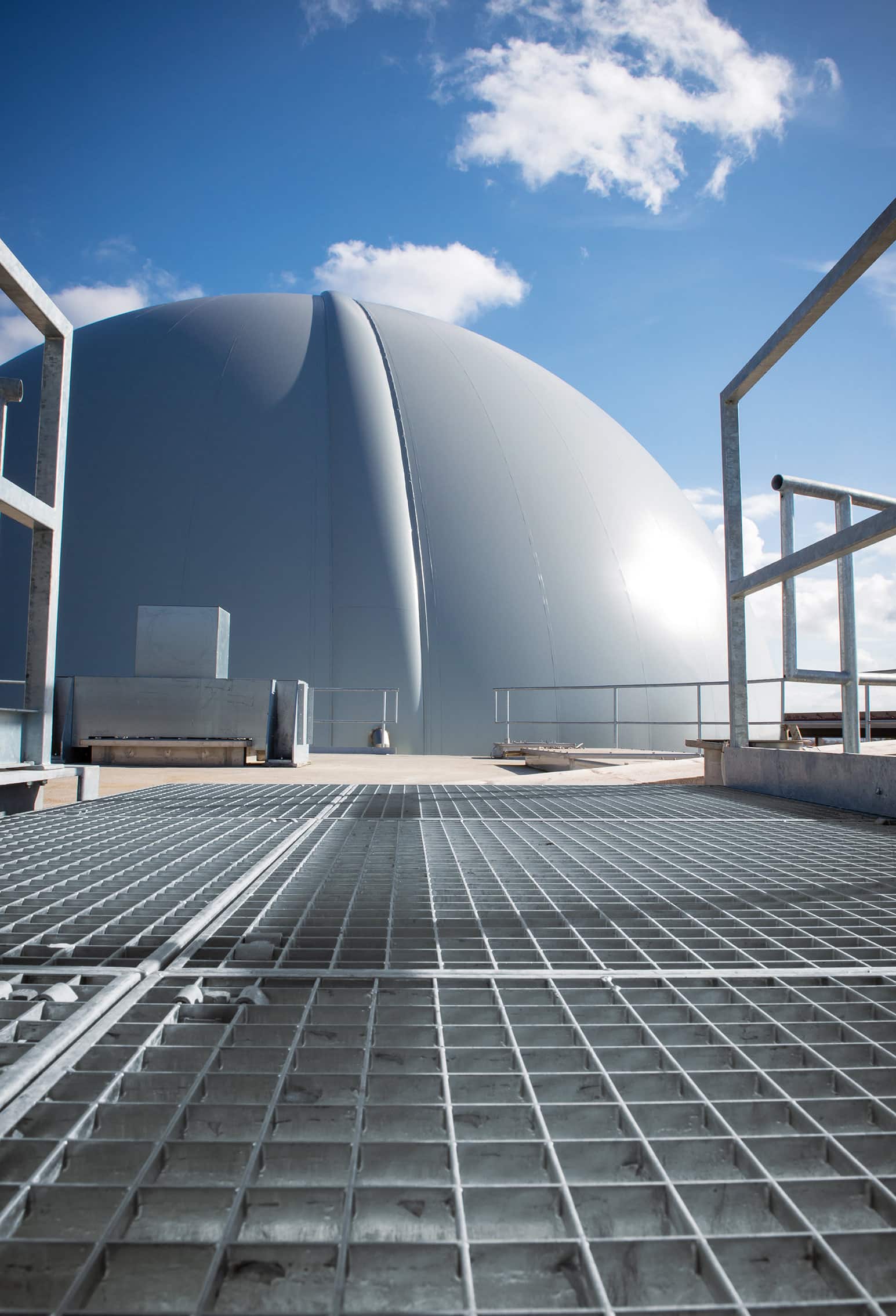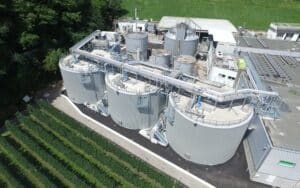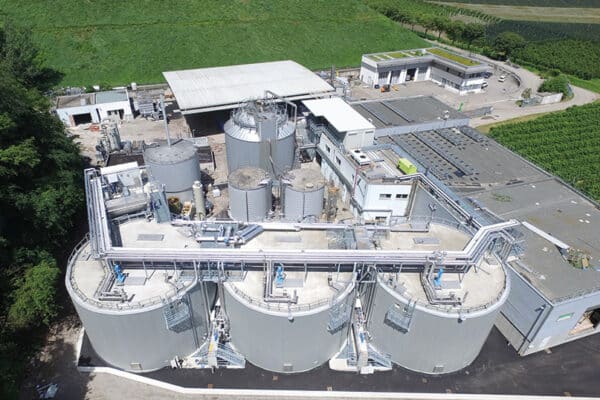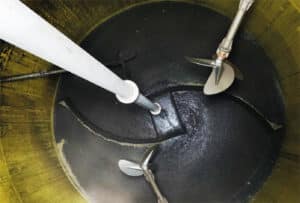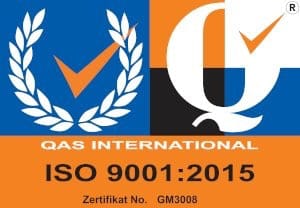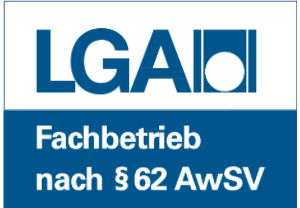Project details
Project:
EcoCenter Lana (IT) – Revision of hydrolysis
Process area:
Case Studies
Charging material:
• 32,000 t/a
• Municipal organic waste and food waste
Report on the revision of hydrolysis
Revision of the 500m³ substrate storage/hydrolysis after four years of continuous operation with treated feed waste suspension. Average dry matter content approx. 18%.
Background:
Approx. 30,000 t/a of biowaste is delivered to the biowaste fermentation plant, where light foreign matter (plastic) in particular is removed using a separating mill. Heavy solids are not separated as well and are not separated if they are smaller than 12 mm in diameter. These solids usually accumulate more or less randomly as the system progresses and then have to be removed from the system as part of inspection work. This can be very expensive and laborious. In the process at the biowaste fermentation plant in Lana(EcoCenter), this heavy fraction is conveyed through the process in a targeted manner and removed from the digesters. The soil scrapers used for this purpose have been used in various projects since 2004. The application in a hydrolysis plant to ensure the further transport of sediments was implemented for the first time in the Lana project. The plant and thus the hydrolysis have been in continuous operation since January 2020. After four years of continuous operation, it was decided to open the tank and assess its condition (revision of the hydrolysis).
1. condition of the container
The tank is made of concrete with a diameter of 8 m and a clear height of 10 m. It is completely lined with polypropylene in the wall and ceiling area. (Yellow) Agitators on three levels ensure that the substrate can be kept largely homogeneous.
2. entry and sampling
Samples are taken from the 3 cm sediment layer at the bottom of the container. Result: Almost exclusively metals (nails, screws, crown caps, etc.) are found
The following points were visually inspected during the hydrolysis inspection:
1. PE film for wall protection:
No damage was found. The film is also firm at the transition from wall to floor. There are no washouts or loose areas

3. the skirt
of the floor scraper shows no wear. The edge of the collecting hoe is smooth without notches.
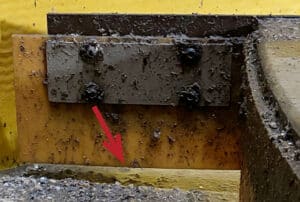
4. the scraper arms
are made of structural steel ST52. The scraper shaft is made of stainless steel 1.4571. No corrosion can be detected in the area of the shaft or on the scraper itself. The condition is perfect after four years of continuous operation.

Summary of the revision of hydrolysis
The hydrolysis tank had been in operation for over four years without the need to remove sediment. A layer of almost exclusively metal parts accumulated in the bottom area. There were hardly any glass parts or bones. These were displaced from the sediment layer by the specifically much heavier metal parts. In the floor area, the cement slurry was removed by acid attack. The grain structure is well preserved. During the next overhaul, the floor should be coated with an acid-resistant coating or a wear layer.
All areas that were protected with PP film are in perfect condition. Neither chemical nor mechanical attack could be detected. No chemical or mechanical attack was detected on the floor scraper either.
Status June, 2024
Similar projects
Our technology offers individual solutions for all process areas in the field of biogas and anaerobic digestion of organic waste. We support our customers from the initial idea through to planning, implementation, commissioning and ongoing operation. Similar projects of our worldwide customers can be found here!
Pasteurization, Pumps
Windmill Holsteins Farms (CA) – Biogas plant
Charging material:
• 7,500 t/a
• Organic waste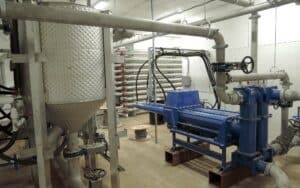
Digestion
KBA Hard (CH) – Sediment discharge system
Charging material:
• Leftovers
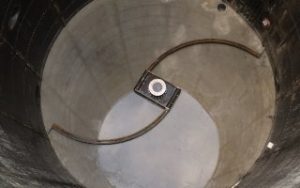
Digestion, Pasteurization, Pumps
Escarpment Renewables (CA) – Modernization of biogas plant
Charging material:
• 35,000 t/a
• Commercial kitchen waste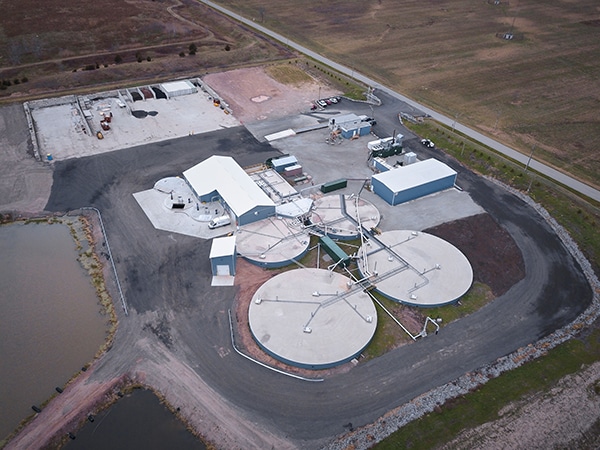
Case Studies, Digestion, Pasteurization, Pre-Treatment, Pumps
BAVA Garmisch-Partenkirchen (DE) – Biogas plant
Charging material:
• 10,000 t/a
• Municipal organic waste and food waste
Case Studies
Rothmühle AES GmbH (DE) – Planning of wet fermentation plant
Charging material:
• 32,000 t/a
• Municipal organic waste and food waste